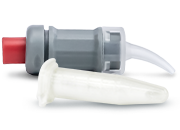
Dentistry, as with other areas of the healthcare industry, has been subject to recent sweeping changes. Today’s rising business costs and shifts in the insurance industry are driving the proliferation of ever-bigger group practices. The democratization of information is also empowering patients and fueling healthcare consumerism. Increasingly expensive care is forcing a growing number of uninsured, out-of-pocket payers to be more selective in their choice of dental care. The situation is further compounded by the fact that both an aging population and an expanding demand for pediatrics are dramatically changing the patient pool in dentistry.
These tectonic shifts are making dentistry more competitive, forcing practices to take marketing more seriously and to evolve how they engage existing and prospective patients. This challenge is especially acute for solo practitioners and small offices that don’t have the marketing dollars that larger group practices enjoy. Unfortunately for smaller practices, an ad in the local Yellow Pages or a billboard on the highway are no longer enough to attract and retain today’s patients. The days of build-it and-they-will-come dentistry are over.
Dental practices that want to thrive in the 21st century will have to follow the lead of many hospital systems across the country and invest more time, energy, and financial resources into building their brand. While many dentists understand the importance of marketing, many don’t understand how to effectively build a brand and take it to market. After all, only a handful of oral health companies have managed to become household names, and even then, they’re usually owned by conglomerates like Procter & Gamble and Johnson & Johnson. Creating a strong brand is even more difficult for local practices that have a fixed geographical reach and offer nearly identical services to those of their competitors.
Whether you run a solo practice, a group practice, or even a dental products company, there are ways to develop a compelling brand that can help you stand apart and more effectively attract and retain new business.
First, however, it’s important to understand what a brand is and what it is not. While the word “brand” is often associated with products, companies themselves have brands, too. A corporate brand is the manifestation of who an organization is, how it’s different, and why it’s valuable. It’s much more than just a logo or a tagline. It must be both expressed and experienced, emerging in what you say and what you do. For dental practices, this means not only saying you’re different, but showing it through the way you interact with patients, the way you design your in-office environment, and even in the value-added services (e.g. patient education and community outreach) you choose to offer.
To create a brand that can own local markets, dental offices must first determine how they are greater than the sum of their parts and what unique value they bring to their patients. What do you have that others don’t? What can you do that others can’t? What are you willing to do that others won’t? What are you trying to accomplish that others aren’t? What perspective or attitude do you have that nobody else does? What, beyond financial gain, gets you up in the morning?
Beyond determining how your brand can leverage its capabilities and personality to differentiate your practice, it’s also important to understand what your market needs. Many dentists understand high-level industry trends but chasing these trends blindly can be disastrous for your brand.
For example, increasing dental demands among baby boomers has led many practices to double down on geriatric services. This groupthink, however, creates a pediatric dental vacuum in local markets at a time when millennials are finally starting to have kids in increasing numbers. Thus, the real needs in your particular marketplace may diverge from the obvious demands of the overall market, and it’s critical to be able to distinguish the two.
Once you’ve identified who you are, how you’re different, and what your market needs, the next step is to translate that knowledge into a brand strategy that will inform and direct everything you say and do. This strategy usually takes the form of a positioning statement that synthesizes what you’ve learned about your organization and your market. This statement can then be translated into the assets and experiences—the touch points— that people will encounter and interact with, e.g. your logo, your website, your office waiting room, your advertising, your community sponsorships, your value-added services, and even your chair-side manner.
Sprig, for example, is positioning itself as the first true technology company in pediatric dentistry—an industry not known for innovation. To deliver on its claim to hold this position, the company has changed its name and visual identity to reflect a more contemporary, technological personality. More importantly, it is aggressively investing resources to evolve its current product offerings and create a variety of new tech inspired products for pediatrics.
Undertaking a rebranding effort is not an easy task. It can be time consuming, pricey, and even contentious. The dental profession is becoming increasingly competitive and consumers (your patients and their parents) are continuing to become more discerning and demanding. In light of this reality, having a strong brand that can generate awareness and trust between you and the people who matter the most to your business will become ever more critical.
KEY TAKE-AWAYS
- Brands are built on strategies that emerge from who you are and what you can do that’s better or different than what others do; they’re more than just clever, memorable logos.
- The best brands are informed by qualitative and quantitative research that analyzes internal and external needs, capabilities, and trends.
- Businesses with successful brands incorporate their branding strategy into everything they say and do, from marketing activities, to the services they offer, and even to the way they interact with clients.
- Management must be committed to adequately funding and enthusiastically supporting a strategic brand-building plan in order for it to succeed.


